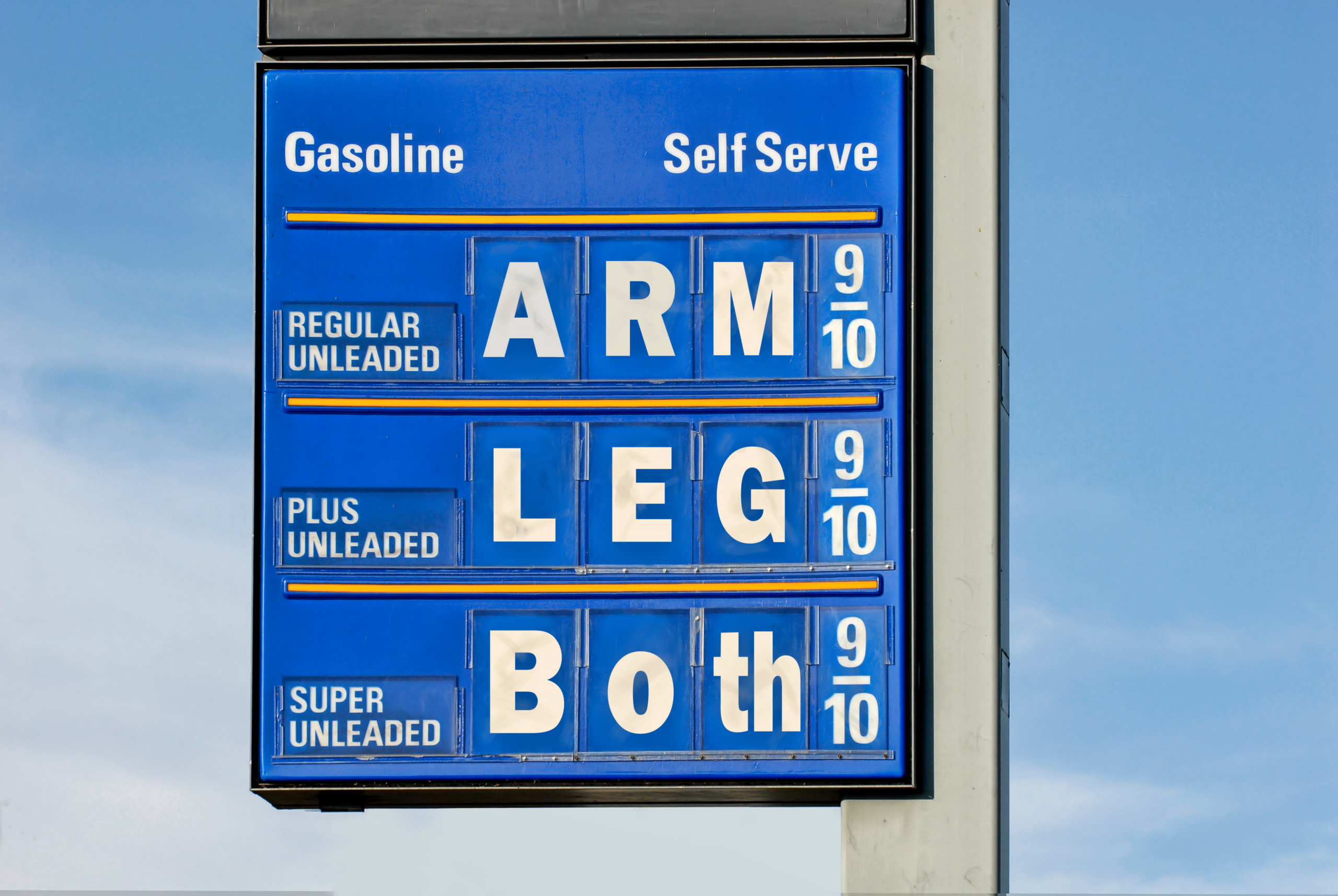Here are some tips from Natural Resources Canada to help tame your gas usage while still fuelling your road warrior spirit:
- Slow down. Most vehicles are most fuel-efficient when traveling between 50 and 80 km per hour. Driving at 120 km per hour instead of at 100 on a 25-km trip will only save you 2 minutes but cost you 20% more. Keep your pace slow and steady.
- Stop driving aggressively. Besides creating a calmer commute, reducing aggressive driving is friendly on your wallet. Avoid hard stops, quick starts and other aggressive habits — they can reduce gas consumption by 10% to 40%.
- Remove rooftop boxes and racks when not in use. The aerodynamic drag created by bulky top-mounted carriers can reduce your fuel efficiency by nearly 20%. Try rear-mounted carriers when you need the storage. They only reduce efficiency by around 5%.
- Lose excess weight. Fuel efficiency is reduced by at least 1% for every 100 pounds (45 kilos). The lighter the vehicle, the better the fuel efficiency.
- Avoid idling. Idling for more than a couple of minutes is a climate-unfriendly gas waster, and it’s tough on your engine. Even if you’re idling to warm up a vehicle in cold weather, many manufacturers recommend driving off — gently — after about 30 seconds because the engine will warm faster. (And if you’re idling your car on the street, you’re a target for thieves.)
- Batch your errands. Save money by combining trips, reducing the number of times you start and stop your vehicle and traveling outside of peak traffic hours. Several short trips on a cold engine can use twice as much fuel as a multipurpose trip covering the same distance.
- Plan your route. Check your GPS for the most fuel-efficient route.
- Use cruise control. When you’re driving long distances, set your cruise control. But don’t use cruise control in bad weather (rain, fog, snow or sleet); instead, reduce your speed to suit the conditions.
- Maintain proper tire pressure. Improper tire pressure can reduce your fuel efficiency by up to 2% and create a driving hazard. Use the tire pressure listed in the owner’s manual or the driver’s side door jamb. Do not use the tire pressure listed on the tire.
- Repair engine problems. Follow your manufacturer’s scheduled maintenance routine and repair problems as they arise.
- Use the manufacturer’s recommended motor oil. The wrong oil grade can reduce mpg by 2%. Ask your mechanic if they use energy-conserving oil (a rating listed on the bottle label), which contains friction-reducing additives for more efficient engine lubrication.
- Reduce air conditioning use. A cold cabin temperature could reduce your mpg by up to 25%. For city driving, keep your windows down and the air conditioning off. On the highway, keep your windows up and the air conditioning on. If you can’t go without air conditioning, set the cabin temperature a little warmer to reduce your use. Check your vehicle owner’s manual for other air conditioning tips.
In addition to driving techniques, try these cost-saving strategies:
- Enroll in cash back or discount offers. Some credit cards offer preferred vendor discounts or rotating cash back offers. Gas stations and grocery stores also have savings programs.
- Use fuel apps. Map and fuel apps provide information on gas station locations, pricing and economy tips. Comparison shop your nearby stations and plan your route to the best deals.

